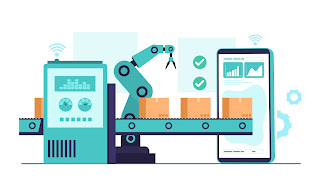Industrial automation systems rely heavily on electric motors to drive machines, conveyors, pumps, fans, compressors, and many other processes. To ensure these motors operate safely and efficiently, proper motor protection and control devices are essential. One of the most commonly used and reliable solutions is the manual motor starter.
Choosing the right manual motor starter is critical for protecting motors, reducing downtime, improving safety, and maintaining smooth industrial operations. In this blog, we will explain what a manual motor starter is, how it works, its benefits, key selection factors, applications, and best practices to help you make the right choice for industrial automation.
What Is a Manual Motor Starter?
A manual motor starter (MMS) is an electromechanical device used to manually start and stop electric motors while providing basic motor protection. It typically combines:
- A switching mechanism (ON/OFF)
- Thermal overload protection
- Short-circuit protection (in some models)
Manual motor starters are widely used in industrial automation because they are simple, cost-effective, compact, and reliable.
Unlike automatic motor starters or advanced motor control centers, manual motor starters require an operator to physically operate the switch. This makes them ideal for smaller motors and applications where simple control is sufficient.
Why Manual Motor Starters Are Important in Industrial Automation
Motors are the backbone of automation systems. Without proper protection, motors can fail due to overloads, overheating, or short circuits. Manual motor starters play a key role by:
- Preventing motor damage
- Improving operational safety
- Reducing maintenance costs
- Minimizing unplanned downtime
- Ensuring compliance with industrial safety standards
In many automation setups, especially at the field level, manual motor starters offer the perfect balance between functionality and affordability.
How a Manual Motor Starter Works
The working principle of a manual motor starter is straightforward:
- Manual Operation – The operator turns the starter ON or OFF using a rotary knob or push button.
- Power Supply Control – When switched ON, power flows to the motor.
- Overload Protection – If the motor draws excessive current for a prolonged period, the thermal protection trips and disconnects the motor.
- Reset Function – After a trip, the starter can be reset manually once the fault is cleared.
This simple operation makes manual motor starters easy to install, use, and maintain.
Key Benefits of Using Manual Motor Starters
Before choosing the right manual motor starter, it’s important to understand its benefits in industrial automation.
1. Motor Protection
- Manual motor starters protect motors against overloads and overheating, extending motor life.
2. Cost-Effective Solution
- They are more affordable than complex motor control systems, making them ideal for budget-sensitive projects.
3. Simple Operation
- No complex wiring or programming is required, making them easy to operate and maintain.
4. Compact Design
- Their small size helps save panel space in control cabinets.
5. Improved Safety
- Manual control allows operators to safely start or stop motors during maintenance or emergencies.
6. Reduced Downtime
- Quick fault identification and manual reset help minimize downtime.
Types of Manual Motor Starters
Choosing the right manual motor starter also depends on understanding the available types.
1. Thermal Manual Motor Starters
These provide protection against overloads using thermal elements. They are widely used in light to medium-duty applications.
2. Magnetic Manual Motor Starters
These combine manual operation with magnetic switching and are suitable for higher power motors.
3. Manual Motor Protectors (MMP)
These offer thermal and magnetic protection in a compact unit and are common in modern automation systems.
Key Factors to Consider When Choosing a Manual Motor Starter
Selecting the right manual motor starter requires careful evaluation of several technical and application-related factors.
1. Motor Rated Current
The most important factor is the motor’s rated current. The manual motor starter must match or slightly exceed the motor’s full-load current (FLC).
- Check the motor nameplate
- Select a starter with adjustable current settings
- Avoid undersized or oversized starters
Proper current matching ensures effective protection without nuisance tripping.
2. Motor Voltage and Power Rating
Ensure the manual motor starter supports the operating voltage and power rating of the motor.
- Common voltages: 230V, 400V, 415V, 690V
- AC or DC applications
- Single-phase or three-phase motors
Incorrect voltage selection can lead to performance issues or equipment failure.
3. Short-Circuit Protection Requirements
Some manual motor starters include built-in short-circuit protection, while others require external fuses or circuit breakers.
- Check the short-circuit current rating (SCCR)
- Ensure compliance with industrial safety standards
- Coordinate with upstream protection devices
This is critical for preventing severe electrical damage.
4. Application Type
Different industrial applications place different demands on motors.
Consider:
- Pumps
- Fans
- Conveyors
- Compressors
- Mixers
- Machine tools
For high-inertia loads or frequent starts, choose a robust manual motor starter with higher durability.
5. Environmental Conditions
Industrial environments can be harsh. Choose a manual motor starter designed for the operating conditions:
- Ambient temperature
- Dust and moisture levels
- Vibration
- Chemical exposure
Look for appropriate IP ratings and rugged construction for long-term reliability.
6. Control and Reset Options
Manual motor starters offer different reset options:
- Manual reset
- Automatic reset
- Remote reset
Manual reset is preferred in industrial automation for safety reasons, ensuring faults are checked before restarting.
7. Mounting and Installation
Consider how and where the manual motor starter will be installed:
- DIN rail mounting
- Panel mounting
- Door-mounted operation
Compact designs simplify installation and reduce control panel size.
8. Compliance and Standards
Always select manual motor starters that meet international and local standards such as:
- IEC
- UL
- IS
- CE
Compliance ensures safety, reliability, and acceptance in industrial projects.
Common Applications of Manual Motor Starters in Industrial Automation
Manual motor starters are widely used across industries, including:
- Manufacturing plants
- Conveyor systems
- Packaging machines
- HVAC systems
- Water treatment plants
- Material handling systems
- Small pumps and fans
- Machine tools
They are especially useful in decentralized motor control and field-level automation.
Best Practices for Selecting and Using Manual Motor Starters
To get the best performance and safety, follow these best practices:
- Always match the starter rating to the motor
- Use proper upstream protection devices
- Label motor circuits clearly
- Perform regular inspections
- Train operators on safe operation
- Keep spare units for critical applications
These practices help extend equipment life and improve system reliability.
Future of Manual Motor Starters in Industrial Automation
Even with advanced automation technologies, manual motor starters continue to be relevant. Modern designs offer:
- Better protection accuracy
- Compact footprints
- Improved safety features
- Integration with control systems
They remain a trusted solution for simple, reliable motor control in industrial automation.
Choosing the right manual motor starter is a critical decision in industrial automation. By understanding motor requirements, application needs, environmental conditions, and safety standards, you can select a manual motor starter that ensures reliable motor operation, improved safety, and reduced downtime.
Manual motor starters provide a cost-effective and dependable solution for controlling and protecting motors in a wide range of industrial applications. When chosen correctly, they contribute significantly to the efficiency, safety, and longevity of automation systems.










.jpg)
.jpg)




